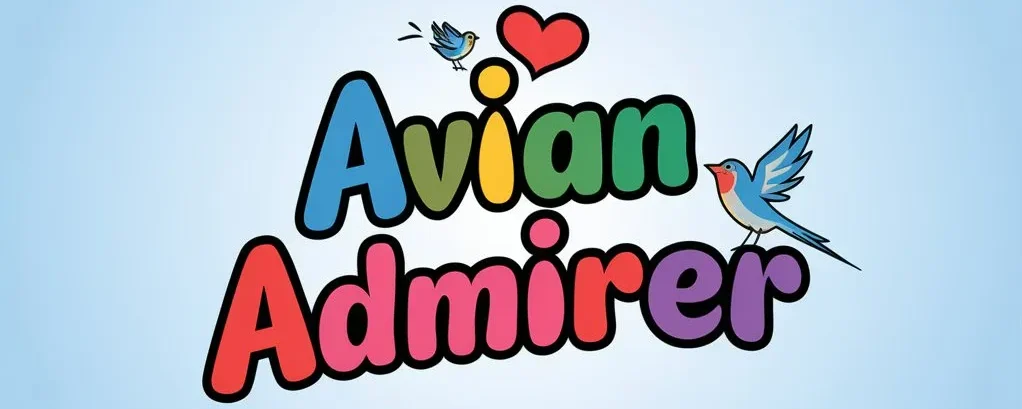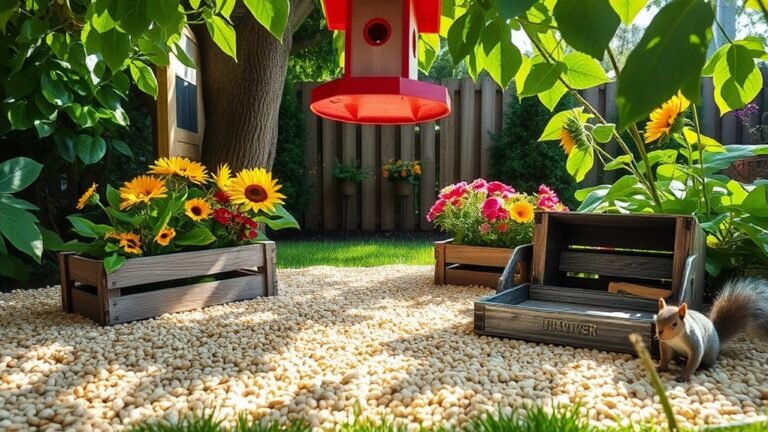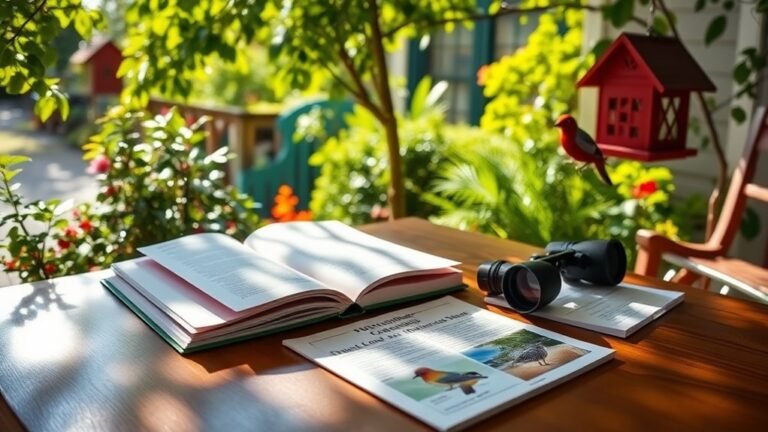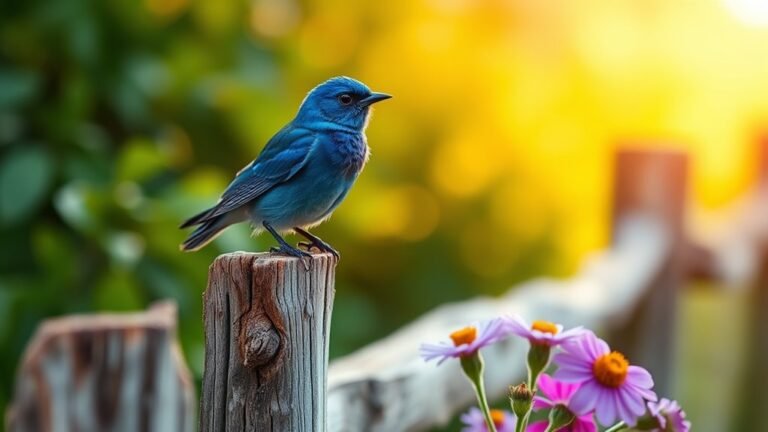How Much Bird Seed Should I Put Out Daily?
Welcome to the world of bird feeding! Have you ever wondered how much bird seed you should put out each day? Feeding birds is a fun and rewarding hobby that helps our feathered friends.
But it’s important to give them the right amount of food. Too little, and the birds might go hungry. Too much, and the food could go to waste.
In this guide, we’ll learn all about feeding birds the right way. We’ll discover how much seed different birds need, what kinds of seeds they like best, and how to keep your bird feeders clean and safe.
Get ready to become a bird feeding expert and make your backyard a happy place for birds!
Key Takeaways
- Birds typically eat 1/4 to 1/2 of their body weight in food daily
- The amount of seed needed depends on factors like bird species, size, and season
- Sunflower seeds attract the widest variety of birds
- Offer a variety of seeds to attract different bird species
- Adjust seed quantities based on consumption to avoid waste
- Provide fresh water along with seeds, especially in dry seasons
- Clean feeders regularly to prevent the spread of diseases
- Consider offering suet in cold weather for high-energy nutrition
- Observe and record the bird species visiting your feeders
- Maintain a consistent feeding schedule once established

Understanding Bird Feeding Habits
Birds have varied appetites. On average, they consume 1/4 to 1/2 of their body weight in food daily. A cardinal weighing 2 pounds might eat up to 1 pound of seeds per day. This amount changes based on the bird’s size, species, and the time of year.
Birds are like tiny eating machines. They need lots of food to stay active and healthy. Some birds eat more in winter to stay warm.
Others eat more in spring when they have babies to feed. It’s important to know that different birds like different foods. Some birds love sunflower seeds, while others prefer fruits or insects.
Birds are amazing creatures with big appetites. They eat a lot compared to their size. Imagine if you ate half your weight in food every day! Birds need this much food because they’re always moving and flying.
Their bodies work hard and burn energy fast. That’s why it’s important to give them enough food, especially when it’s cold outside or when they’re taking care of baby birds.
Calculating Seed Portions
To estimate the right amount of seed, consider the total weight of seed-eating birds in your yard. Divide this weight by two to get a starting point for daily seed portions. Adjust the amount if you notice excess seed left uneaten.
Figuring out how much seed to put out is like solving a fun math problem. First, you need to guess how many birds visit your yard. Then, think about how big they are.
Big birds eat more than small birds. Start by putting out a small amount of seed. Watch to see if the birds eat it all. If they do, you can add a little more next time.
Feeding birds is like being a bird restaurant owner. You need to know how many customers you have and how hungry they are. Start with a small amount of seed, maybe a handful.
Watch your bird feeder closely. If the birds eat all the seed quickly, you can add more next time. If there’s leftover seed at the end of the day, use less tomorrow. It’s okay to experiment until you find the right amount.
Choosing the Right Seeds
Sunflower seeds attract the most diverse range of birds. They form the foundation of most backyard bird feeding programs. Other seeds like safflower, nyjer, and white proso millet can attract specific bird species.
Picking the right seeds is like choosing the perfect snack for your bird friends. Sunflower seeds are like pizza for birds – almost everyone likes them! But some birds prefer other seeds. It’s fun to try different types and see which birds show up. You might be surprised by the colorful visitors you get!
Think of bird seeds like different flavors of ice cream. Most birds love sunflower seeds, just like many people love vanilla ice cream. But some birds prefer other seeds, like safflower or nyjer.
These are like special flavors that attract certain birds. You can mix different seeds to make a tasty bird buffet. This way, you’ll see many different kinds of birds in your yard. It’s exciting to see which birds come for each type of seed!

Seasonal Feeding Patterns
Bird feeding habits change with seasons. In late summer, birds may visit feeders less due to abundant natural food sources. Winter sees increased feeder activity as natural food becomes scarce.
Birds eat differently depending on the time of year. In summer, they find lots of bugs and berries to eat. They might not visit your feeder as much. But in winter, when it’s cold and snowy, birds really need your help. They come to feeders more often because it’s harder to find food in nature.
Birds are like us – their eating habits change with the seasons. In spring and summer, birds find lots of natural food. They eat bugs, worms, and fresh berries.
During this time, they might not visit your feeder as much. But when fall comes, birds start preparing for winter. They eat more to build up fat. In winter, birds really depend on feeders. Natural food is hard to find under snow and ice. That’s when your feeder becomes a bird’s favorite restaurant!
High-Energy Foods for Cold Weather
During cold months, birds need high-energy, high-fat foods. Suet is an excellent option, providing concentrated energy to help birds maintain their body heat.
When it’s cold outside, birds need extra energy to stay warm. It’s like how we eat hot soup on chilly days. Suet is a special bird food that’s full of energy. It’s made from fat and seeds. Birds love it because it helps them stay warm and strong during winter.
In winter, birds need extra energy to stay warm. It’s like how we wear thick coats and eat warm food when it’s cold. Suet is perfect for winter bird feeding. It’s made of fat mixed with seeds or fruits. This high-energy food helps birds keep their body temperature up.
Woodpeckers, chickadees, and nuthatches especially love suet. You can buy suet cakes at the store or make your own. Hanging a suet feeder in winter is like giving birds a warm, energy-boosting snack.
Water: An Essential Component
Offering fresh water is as important as providing seeds, especially in dry seasons. Use a shallow, easy-to-clean dish to prevent drowning and the spread of pathogens.
Birds need water just like we do. They use it for drinking and bathing. In hot weather, water is super important. You can help birds by putting out a shallow dish of water. Make sure to change the water often to keep it clean. Birds will be happy to have a fresh drink and a place to splash around!
Water is just as important for birds as food. Birds need fresh water every day for drinking and bathing. In summer, water helps birds stay cool. In winter, it’s hard for birds to find water when everything is frozen.
You can help by putting out a birdbath or a shallow dish of water. Make sure the water is clean and not too deep. Birds like shallow water they can stand in.
Change the water every day to keep it fresh. You’ll see birds drinking, bathing, and having fun in the water!
Adjusting Quantities Based on Demand
Observe how quickly birds consume the seed you put out. In peak seasons, you might need to refill feeders twice daily. Always adjust the quantity to match demand and avoid waste.
Watching how fast birds eat the seeds is like being a bird detective. If the feeder is empty quickly, you know the birds are hungry.
You might need to fill it up more often. But if there’s always leftover seed, you can put out less. This way, you don’t waste food and keep the birds happy.
Being a good bird feeder means paying attention to how much the birds eat. It’s like being a bird restaurant manager. Some days, birds might eat all the food quickly.
Other days, there might be leftovers. If you notice the feeder is empty by lunchtime, try putting out more seed. If there’s always seed left at the end of the day, use a little less.
This way, you make sure all the birds get enough to eat without wasting food. Remember, it’s okay to change the amount of seed you put out as the seasons change.

Consistency in Feeding
Once you establish a feeding routine, try to maintain it. Birds come to rely on consistent food sources, especially during harsh weather conditions.
Birds are creatures of habit. They like to know where their next meal is coming from. If you start feeding birds, try to do it regularly. It’s like how you expect dinner at the same time every day. Birds will learn to visit your feeder at certain times. This is especially important in winter when food is hard to find.
Birds like to know they can count on you for food. It’s like how you like to eat breakfast at the same time every day. Once you start feeding birds, try to do it at the same time each day.
This is called being consistent. Birds will learn when to expect food from you. They might even wait in nearby trees for you to fill the feeder!
This is very important in winter or during bad weather when it’s hard for birds to find food on their own. By being consistent, you become a reliable friend to the birds in your neighborhood.
Variety in Bird Feed
Offer a mix of seeds to attract different bird species. However, avoid mixes with fillers like red millet, oats, and rapeseed, as these are often left uneaten and can spoil.
Giving birds different types of food is like offering a buffet. Some birds like sunflower seeds, others prefer nuts or fruits.
By putting out a variety, you can attract many kinds of birds. But be careful not to use seed mixes with stuff birds don’t like. These can go bad and make birds sick.
Offering different types of bird food is like setting up a bird buffet. Just as people like different foods, birds do too. Some birds love sunflower seeds, while others prefer nuts or fruits.
By offering a variety, you can attract many different kinds of birds to your yard. It’s fun to see which birds come for each type of food. But be careful about buying mixed bird seed.
Some mixes have things birds don’t like, such as red millet or oats. These can go to waste and even spoil. It’s better to offer a few types of seeds that birds in your area really like.
Monitoring Bird Activity
Keep track of the bird species visiting your feeders. This can help you adjust your seed types and quantities to better serve your local bird population.
Watching birds at your feeder is like being a scientist. You can write down what kinds of birds you see and when they come. This helps you learn about the birds in your area.
You might notice that some birds come in the morning, while others visit in the evening. This information can help you decide what food to put out and when.
Being a bird watcher is like being a nature detective. You can keep a notebook to write down what birds you see at your feeder. Notice what time of day different birds come.
Some birds might visit in the morning, others in the evening. You might see different birds in different seasons. This information helps you know what kinds of birds live in your area.
It also helps you choose the right seeds. For example, if you see lots of finches, you might want to offer more nyjer seeds. Watching and recording bird activity is a fun way to learn about nature right in your own backyard!
Proper Feeder Maintenance
Clean your feeders regularly to prevent the spread of diseases. Remove any uneaten or wet seed promptly to avoid mold growth.
Keeping bird feeders clean is very important. It’s like washing your dishes after every meal. Dirty feeders can make birds sick. Clean your feeder with soap and water every few weeks. Also, throw away any wet or old seeds. This keeps the birds healthy and happy.
Taking care of your bird feeder is like cleaning your kitchen. Just as we keep our eating areas clean to stay healthy, birds need clean feeders too. Dirty feeders can spread diseases among birds.
Clean your feeder every two weeks with hot, soapy water. Rinse it well and let it dry completely before refilling. Also, check the feeder every day for wet or moldy seeds.
Throw these away immediately. Wet seeds can grow mold, which is very bad for birds. By keeping the feeder clean, you help keep the birds healthy and happy.
Supplementing with Suet
In cold weather, supplement seed with suet. This high-energy food attracts a wide variety of birds and provides crucial fat reserves.
Suet is like a power bar for birds. It’s made of fat and is full of energy. In cold weather, birds need extra energy to stay warm. Suet helps them do this.
Many birds love suet, including woodpeckers and chickadees. You can buy suet cakes at the store or make your own at home.
Suet is like a super snack for birds, especially in cold weather. It’s made mostly of fat, which gives birds lots of energy. Think of it as a bird’s version of hot chocolate on a cold day.
Suet comes in small cakes that you can put in a special feeder. Many birds love suet, especially woodpeckers, chickadees, and nuthatches. These birds cling to the suet feeder and peck at the cake.
Suet is great in winter because it helps birds stay warm. You can buy suet cakes at the store, or even make your own with bird-safe ingredients.
Adding suet to your bird feeding routine is a great way to attract more birds and help them through the cold months.
Balancing Natural and Supplemental Food
Remember that bird feeders should supplement, not replace, natural food sources. Encourage a diverse garden habitat to provide natural foraging opportunities.
Feeding birds is helpful, but it’s not their only food source. Birds also eat insects, berries, and seeds from plants. It’s good to have a garden with different plants.
This gives birds natural food and places to hide. Think of your bird feeder as a snack bar, not the main restaurant for birds.
Your bird feeder is like a helpful snack shop for birds, but it shouldn’t be their only food source. Birds naturally eat many things like insects, berries, and seeds from plants. It’s good to have a yard with different types of plants. This gives birds more natural food choices.
Plants also provide places for birds to hide and build nests. You can plant trees, shrubs, and flowers that birds like. For example, sunflowers provide seeds, and berry bushes offer fruit.
By having both feeders and natural food sources, you create a bird-friendly environment. This way, birds get the best of both worlds – your helpful snacks and nature’s buffet!
Adapting to Local Bird Populations
Different regions have different bird species. Tailor your seed choices and quantities to the specific needs of birds in your area.
The birds in your backyard might be different from birds in other places. It’s like how people in different countries eat different foods. Learn about the birds that live near you.
This can help you choose the right seeds. Some areas have lots of finches, while others might have more cardinals. Knowing your local birds helps you feed them better.
Birds in your area are like your neighborhood friends. Just as your friends might like different snacks, birds in different places prefer different seeds. Learn about the birds that live near you. You can use a bird guidebook or a bird watching app to identify them.
Once you know what birds visit your yard, you can choose the best food for them. For example, if you see lots of goldfinches, they love nyjer seeds.
If you have many cardinals, they prefer sunflower seeds. By matching your bird food to your local birds, you’ll attract more feathered visitors and help them thrive in your area.
FAQs
How often should I refill my bird feeders?
Refill your feeders when they are nearly empty, typically every 1-3 days depending on bird activity.
Can I feed birds year-round?
Yes, you can feed birds throughout the year. Their needs and visiting patterns will change with the seasons.
How can I attract a variety of bird species?
Offer different types of seeds and feeders to attract various bird species. Sunflower seeds, nyjer seeds, and suet can attract a wide range of birds.
Is it necessary to provide water for birds?
Yes, providing fresh water is crucial, especially during dry or hot periods. Clean and refill water sources daily.
How do I prevent squirrels from eating all the bird seed?
Use squirrel-proof feeders or baffles, and position feeders away from structures that squirrels can use to access them.

Ava is a bird enthusiast and nature lover who has spent countless hours observing and learning about the fascinating world of birds. With a passion for sharing her knowledge and inspiring others to appreciate the beauty of birds, Ava writes about her experiences and insights on avianadmirer.com.







